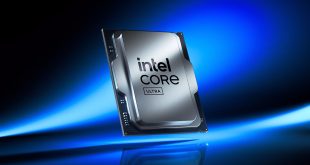Temash
Temash will form AMD's ultra-low power, entry-level line-up of mobile APU products. Intended to compete directly with Intel's Celeron and Pentium mobile chips that are used in notebooks, and slotting in between the Core i3 and Atom parts found in tablet devices, versatility is one of the key features of AMD's dual- and quad-core A4-12xx and A6-14xx parts.
Designed for use with small and touch screen tablet and hybrid devices, AMD is claiming that its A4 and A6 APUs have the “best graphics experience of any SOC on the planet for touch tablets, hybrids and notebooks”. While that's a pretty bold claim, and one that we can't wait to test with our hands-on coverage of future products, the entry-level APUs' specs sheets are unquestionably impressive.
The A6-1450 APU features four “Jaguar” cores, 2MB of shared L2 cache and a Radeon HD 8250 graphics processor. According to AMD's press information, “Jaguar” cores offer a performance improvement of up to 20%, in comparison to “Bobcat” cores. The chip communicates directly with the single-channel, 64-bit DDR3 memory which is capable of a maximum speed of 1333MHz (product dependant).
AMD has an interesting feature that allows the A6 to boost its clock speed from the base frequency of 1.0GHz up to 1.4GHz when used with an add-on, power-supplying dock.
The entry-level A4 APUs are both dual core parts. Sporting a slightly slower GPU than the A6 chip, AMD's A4-1250 is a cut-down part which is intended for use with large screen, portable devices such as hybrid tablets. The question of its power consumption was raised at the event, but with no conclusive answer, we wouldn't be surprised if the 9W figure is a mistake in AMD's material. AMD said that it wouldn't be surprised if the higher-wattage parts were used in enclosures with fans.
In search of a minute 3.9W power envelope, AMD's A4-1200 chip lowers its graphics processor to a HD 8100 series model.
Compared to the previous generation AMD C-70 chip, the Temash APUs offer a performance per watt increase of more than 200%, in certain scenarios. AMD also says that Temash-based products are capable of a battery life of up to 12 hours and can wake from sleep mode in as little as 1.6 seconds.
AMD's Elite Mobility APUs support resolutions of up to 2560×1600 pixels, and sport an impressive feature set that includes USB 3, DirectX 11 support, and up to 8GB of memory. According to AMD, Temash-based products could allow OEMs to reach the iPad's price point with their large-screen tablet devices.
 KitGuru KitGuru.net – Tech News | Hardware News | Hardware Reviews | IOS | Mobile | Gaming | Graphics Cards
KitGuru KitGuru.net – Tech News | Hardware News | Hardware Reviews | IOS | Mobile | Gaming | Graphics Cards









Finally, AMD has got it almost right in their product lines. Hitting the mid to low ends of the market is where the volume is (it is declining now due to lack of products in this space). Getting a range of products from cheaper ultrabooks at the $400-$600 price range is important. The current $650 and up prices are way to high for the cash strapped market to bear. On the low end side, a good Win8 tablet around $350 mark will make a reasonable student computer/laptop hybrid.
While Intel keep pushing the high end, the mid and low ends were suffering and AMD could not really address them before. Now a complete range of chips exist to fulfill that market. With aggressive pricing from AMD, they might be able to jazz that market back to the volumes prior to Windows 8.